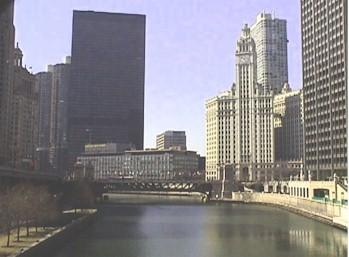Chicago River Fishing Spot
- Elevation: 596'
- Last Modified By: vinny60 on 09/09/09 05:08 PM
- Ask about Chicago River in our Fishing Forums
Photos
Fish Species
Chicago River Description
The Chicago River is located on the western shore of Lake Michigan in Chicago, Illinois. The Chicago River serves as a vital transport link between Lake Michigan and the Illinois Waterway. Federal responsibility for improving navigation on the river began in 1899. By 1941, the river was transformed into its present configuration. The Chicago District's portion of the project consists of the main and north branches of the river which includes a 21 feet deep navigation channel from Rush Street to North Avenue. The south branch of the Chicago River is maintained by the Rock Island District Corps of Engineers It consists of a 9 feet deep navigation channel that is connected to the Illinois Waterway by the Chicago Sanitary and Ship Canal. Principle commodities transported on the river consist of sand, gravel, crushed rock, scrap iron, fuel oil, coal and non-metallic minerals. The Chicago River is 156 miles (251 km) long, and flows through downtown Chicago. There was a boat ramp at 55th Street and the Ship & Sanitary Channel that could accommodate trailered power boats. It is presently closed, however there are plans underway to reopen the ramp as well as a park as part of Summit's bid for a riverboat casino. There are also Chicago Park District ramps at Burnham Harbor and Monroe harbors on Lake Michigan. You could launch at one of these ramps and then travel back through the Chicago Harbor locks for access to the river. Private power boats, canoes, rowboats allowed. Outboard motors permitted. Boat ramp is concrete. Fish species: Largemouth Bass Bluegill Bullhead Catfish Channel Catfish White Crappie Black Crappie Carp.
The Chicago River is 156 miles (251 km) long,[1] and flows through Chicago, including the downtown. Though not especially long, the river is notable for the 19th century civil engineering feats that directed its flow south, away from Lake Michigan, into which it previously emptied, and towards the Mississippi River basin. This was done for reasons of sanitation. The river is also noted for the local custom of dyeing it green on St. Patrick's Day.
